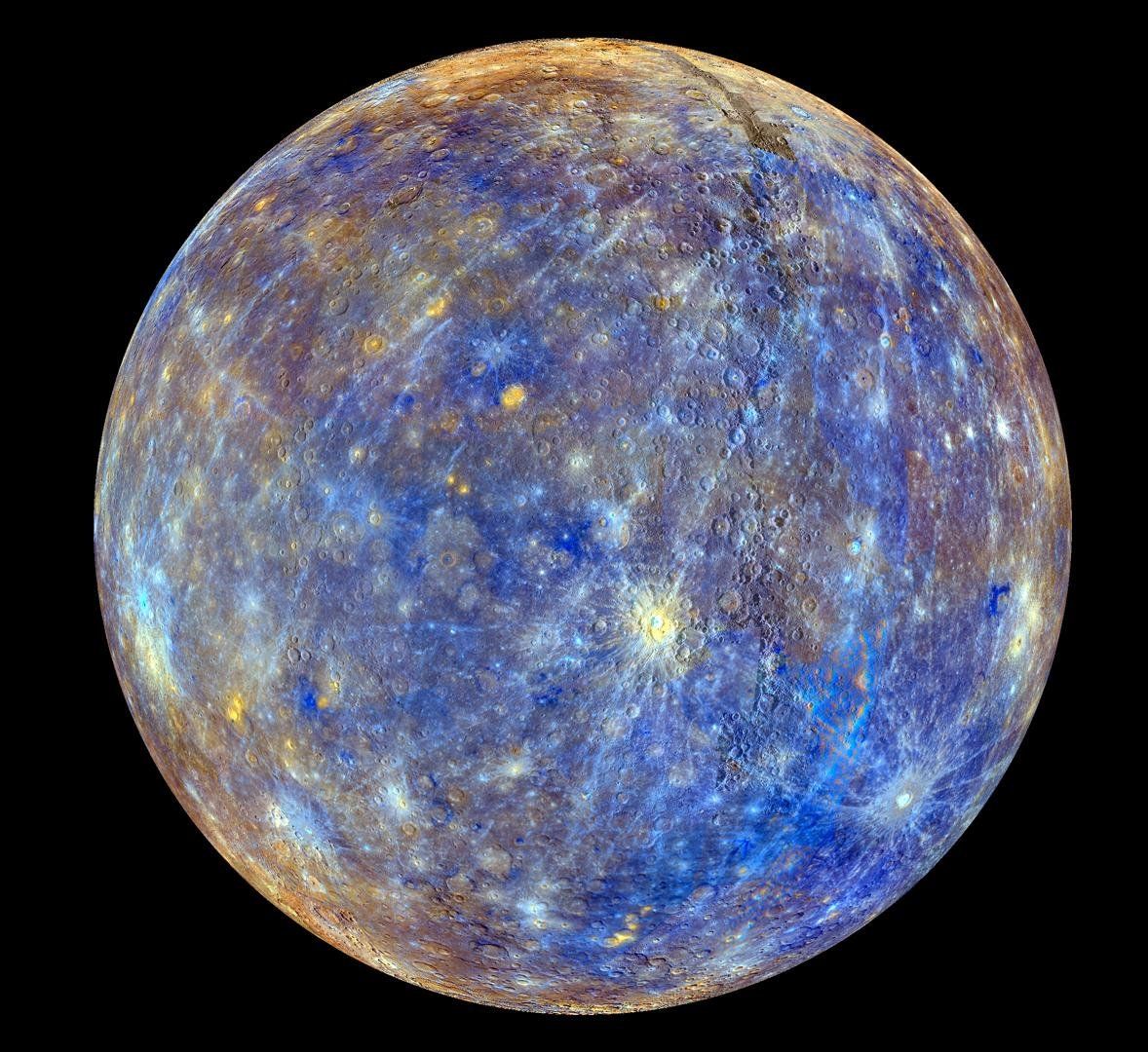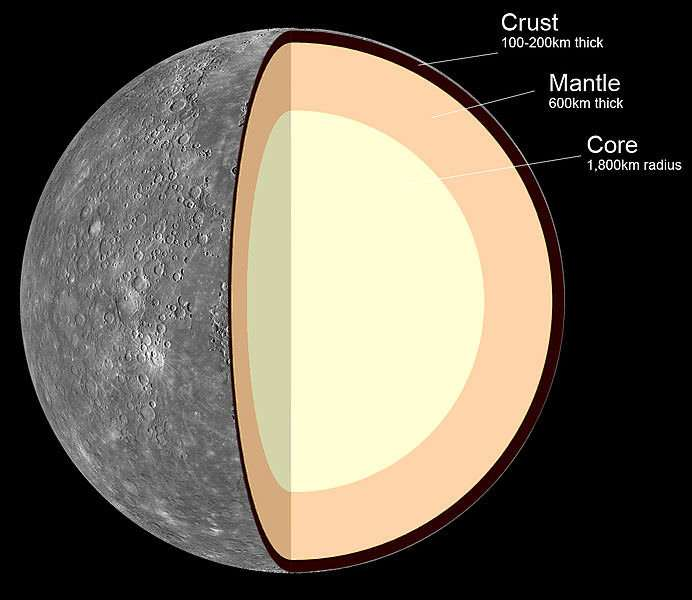Home > Sections > The Universe > Mercury
Last Updated: 14th June 2023
ARCHIVED ITEM: this page is no longer updated.
Mercur
Keywords
Mercury, closest, solar orbit, 88 days, elliptical, craters, Hermes, Apollo, speedy, tail-like comet, slow rotation.
Introduction
Mercury is a small planet that sits closest to the Sun. It's orbit is very quick, and a year on Mercury lasts only 88 days of Earth's year. To put that into perspective, one year here is the equivalent of just over 4 years on Mercury.
Planet Features
Size: the eight in terms of size of the solar planets, Mercury is the smallest of the true planets (not including Pluto).
Visual Appearance: looking very similar to our Moon, and also only slightly bigger than the Moon, Mercury is visually a cratered planet. It is also not a complete circle - it is elliptical in shape - and due to this, if you were to stand on the surface and watch the Sun, it would rise, set, rise again and then set again, depending where you are standing.
Interesting fact: Mercury moves around the Sun at 112,000mph (180246.5km/h) and it's elliptical orbit means that it varies between 29 million miles and 43 million miles (47-69 million kilometres).
Structure: Mercury is a rock planet, and has only a small atmosphere - not enough to support life. It is also very dense, with a large iron core. This iron core is three-quarters of the size of the planet. It's outer crust is only 200 miles (300 kilometres) thick!
Name: Mercury has had a few names, both in Greek and Roman mythology. In classical Greece, it was named Apollo, and then Hermes, the Greek equivalent of the Roman god Mercury. Because Hermes was a messenger of gods, it was deemed that Mercury would be it's name, due to the speed in which is rotates around the Sun.
More: Mercury has no rings or moons, and it being so close to the sun, it receives a lot of radiation from the Sun - three times as much as Earth does currently. Although Mercury goes around the Sun quickly, it actually rotates slowly, and so a day lasts 59 Earth days.
Mercury has a tail, like a comet. You won't be able to see this with a regular telescope, because it requires a special instrument in order to see it. It follows the planet for around 1.5 million miles (2.5 million kilometres), and it does this because of it's proximity to the Sun.
Here is a YouTube video from National Geographic on Mercury:




 Earth
Earth

